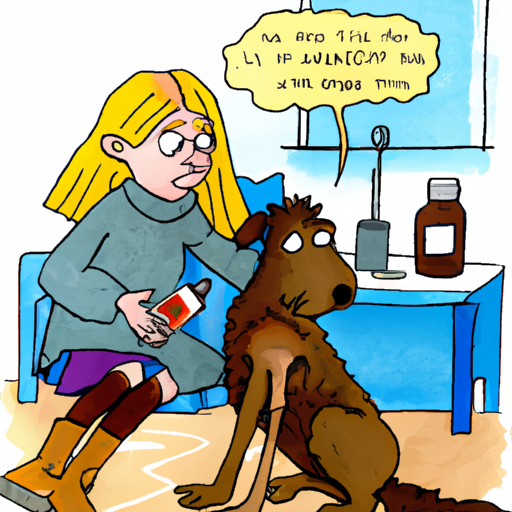Even the best loved, best cared for dogs can occasionally contract illnesses, such as ringworm. As a loving caregiver, it’s crucial to know what to do when this happens. Here’s a guide on how to effectively treat ringworm on dogs.
H2: Understanding Ringworm in Dogs
Ringworm, contrary to its name, is not a worm but a fungal infection that affects the skin, hair and occasionally the nails. It’s characterized by round, red lesions on the skin and patches of hair loss. Dogs can contract ringworm from other animals or from spores in the environment.
While ringworm can be an uncomfortable condition for your dog, it’s important to remember that it’s very treatable and not life-threatening. As a caregiver, your role will be to provide the necessary care and to minimize the spread of the infection, since ringworm is contagious to other animals and humans.
H2: Diagnosing Ringworm
Before starting any treatment, it’s essential to ensure your dog actually has ringworm. Other skin conditions can mimic its symptoms. Your vet will conduct a physical examination, and may use a special ultraviolet lamp, known as Wood’s lamp, to search for fluorescence on the fur.
A definitive diagnosis is made by fungal culture, where hairs and skin scrapings are collected and cultured in a laboratory. The results can take up to two weeks.
H2: Treatment Options for Ringworm on Dogs
Once ringworm is confirmed, the treatment will typically involve the following steps:
-
Topical Therapy: Application of creams, ointments, or medicated shampoos. This helps to kill the fungus on the skin and hair.
-
Oral Medication: Oral antifungal drugs may be prescribed by your vet. These medications work internally to kill the fungus.
-
Environmental Cleaning: As ringworm spores can survive in the environment, thorough cleaning is necessary. This includes washing all pet bedding, brushes, and other items your dog frequently contacts.
| Treatment Type | Example |
|---|---|
| Topical Therapy | Medicated Shampoos, Creams |
| Oral Medication | Itraconazole, Fluconazole |
| Environmental Cleaning | Washing pet bedding, toys |
H2: Preventing Re-Infection
Preventing re-infection is just as important as treating the existing infection. Here are some tips:
- Regularly clean and disinfect your dog’s environment.
- Quarantine your infected dog from other pets until treatment is finished.
- Regularly wash your hands after handling your dog.
H2: Frequently Asked Questions (FAQs)
Q: How long does it take for ringworm to clear up in dogs?
A: Typically, treatment for ringworm in dogs will last a minimum of six weeks.
Q: Can humans catch ringworm from dogs?
A: Yes, ringworm is zoonotic, meaning it can be passed from animals to humans.
Q: Is ringworm in dogs a serious condition?
A: While uncomfortable for your dog and contagious, ringworm is not life-threatening and is very treatable.
Q: Can ringworm reoccur in dogs?
A: Yes, if the environment is not properly cleaned, re-infection can occur.
Remember, being a responsible caregiver means taking care of your furry friend’s health. If you suspect your dog has ringworm, don’t panic. With proper treatment and care, your dog will be back to its healthy, happy self in no time.



